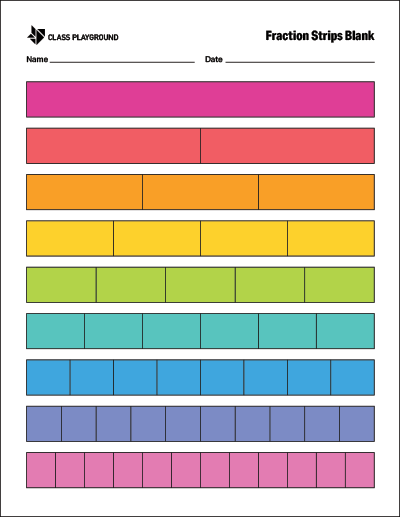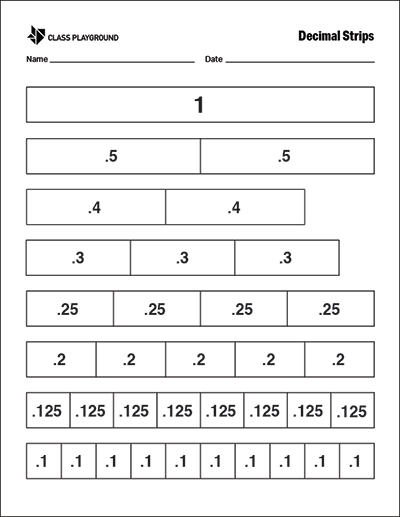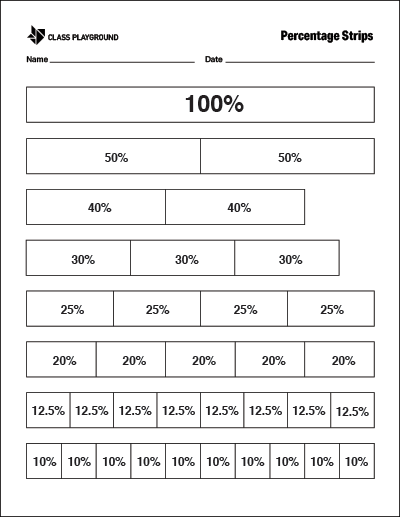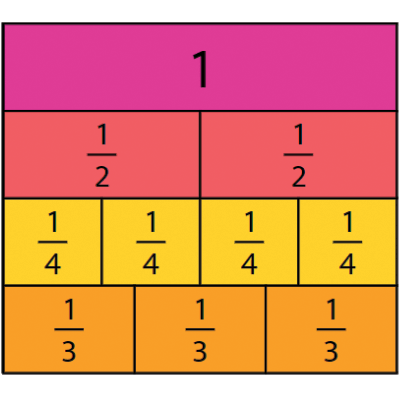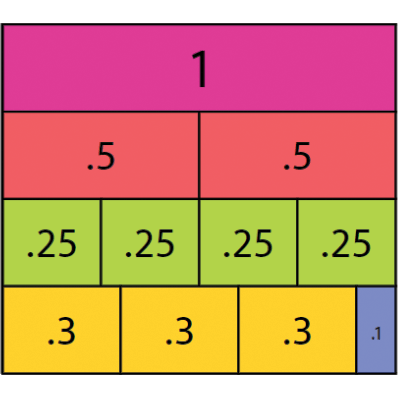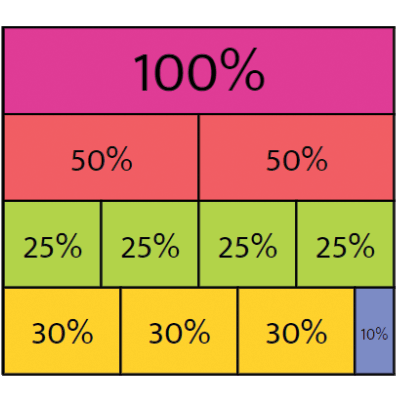Fraction Strips: Making a Complex Topic Simple
Which is bigger, one-third or one-fourth? Without a visual, many people wouldn’t know. In fact, A&W’s “third pounder” burger flopped in the 1980s because people believed that a quarter pounder was a better deal than a third of a pound burger.
Fractions can be a tricky topic, which is why tools such as fraction strips are so helpful. With these visual bars, students can model and compare parts of a whole, bringing the concept to life through concrete examples.
What Are Fraction Strips?
Fraction strips are math manipulatives that provide a visual representation of fractions. They are rectangular bars, or ‘strips,’ that show a whole or parts of a whole.
A typical set includes one strip that represents the whole (1). Other strips are divided into halves (1/2), thirds (1/3), fourths (1/4), and so on. Some sets are color-coded or labeled, while others are blank for students to label themselves.
How to Use Them
Fraction strips can be used in many ways to explore different concepts. In the classroom, you can use online models such as the Toy Theater Fraction Strips tool or printable strips that students cut out. Print on cardstock, laminate for durability, or use as-is. In all cases, students can move the pieces to model fractions, compare sizes, perform operations, and more.
To compare, line up the whole strip and place smaller fraction strips beneath it, aligned to the left edge. This makes it easy to see which fractions are larger or smaller, and to demonstrate equivalence.
Activities for the Classroom
Here are some engaging ways to use strips to build understanding. As students progress, you can increase the challenge with more complex tasks:
- Modeling Fractions: Show students a fraction such as two sixths (2/6). Ask them to model it using strips. You can also challenge students to model mixed numbers.
- Understanding Sizes: By comparing one strip with another, students can clearly see which is larger. For example, 1/2 is larger than 1/4 when the strips are lined up. They can also record comparisons with greater than and less than symbols (e.g., 1/3 > 1/4).
- Equivalent Fractions: Demonstrate that two 1/4 strips equal one 1/2 strip, or compare strips to show that 3/6 = 1/2. You can also connect to fraction circles to show the same relationships in a different model.
- Adding and Subtracting: Challenge students with problems like 1/6 + 2/6. Using strips, they can see that the sum is 3/6, which simplifies to 1/2. The same approach works for subtraction, supported with equivalent fractions.
- Linking to Decimals and Percents: Compare strips to decimal and percentage models. For example, show that one-half equals 0.5 and 50%. Try the Toy Theater Decimal Strips and Toy Theater Percent Strips to make the connections even clearer.
Benefits
Using strips in math lessons offers several advantages:
- Visual Learning: Makes an abstract idea concrete, especially for visual learners.
- Active Engagement: Moving and comparing pieces turns math into a hands-on activity.
- Confidence Building: Simplifies difficult concepts, helping students feel more capable.
- Deeper Understanding: Students learn to visualize amounts, improving their ability to solve problems involving fractions.
Conclusion
Fraction strips give students a simple, visual way to understand fractions and build confidence with a tricky concept. By modeling, comparing, and exploring fractions through hands-on activities, students develop stronger number sense and lasting skills they can apply in both math class and real life.




